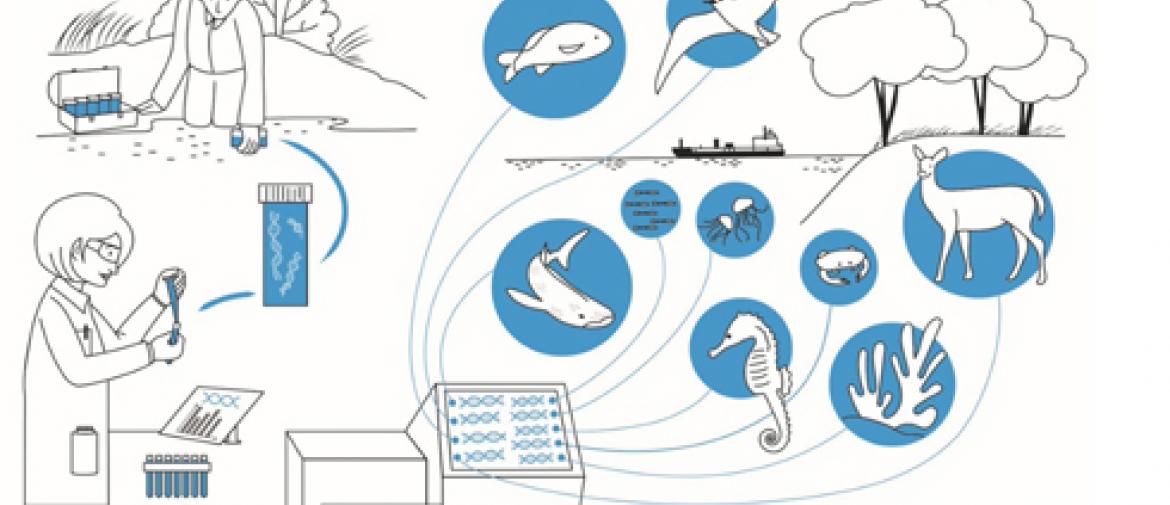04/01/2021 News
eDNA is revolutionizing biodiversity monitoring
The teams at Total in Pau (CSTJF) is taking the lead of environmental DNA (eDNA) research to "capture" biodiversity and tell the story of an eco-system!
All living beings leave traces of DNA behind. It’s true of humankind since the discovery of DNA in 1953. Imagine a method able to inventory all the animal species present on any given site, from the abyssal ocean or on land, using DNA traces. Adopted from the medical sector, genomics and the analysis of environmental DNA (eDNA) could soon become “the regulatory norm” for making an inventory of the animal species present on a site at a time T at any site.
Since 2017, our R&D teams have been working at the cutting edge of research on eDNA and are contributing to the development of new applications. This innovative method will enable us to improve our measurement and monitoring of biodiversity in our operations on a daily basis.
Quicikly discover the eDNA and its amazing potential in this short film!
Making eDNA talk
« Based on just a sample – like a glass of water or a handful of sediments – the method can take a picture of biodiversity and tell the story of an ecosystem: presence of rare or emblematic species, food chain, inventory of species, propagation of an invasive species, population dynamics and so on,» explains Thomas Merzi, Head of the eDNA Environmental Genomics R&D section. It can also help to evaluate the footprint of human activities and carry out conservation actions.

Compared to conventional characterization based on counting and taxonomy, eDNA shows great promise. The water sample taken on site has to be made “readable”. The investigation begins... the water is filtered to recover the evidence, i.e. the cells taken from the species present in the environment. The next step consists in extracting the DNA strands, which are then placed in a high-throughput sequencer, an extremely powerful machine that identifies each species as a specific genetic code. All that remains to be done then is to interpret these millions of bar codes to reveal the identity of the site’s inhabitants.
The eDNA method meets the Group’s HSE expectations and has countless applications: characterization of the environmental baseline study, monitoring of impacts around the installations, biomonitoring of rare or emblematic species, and more.
Total’s R&D department has kicked off several pilots: eDNA is used in Qatar for example to monitor whale sharks, and metagenomics are also used in the microbiology laboratory of the PERL to determine the impact of industrial activity on soil.
See more on CNBC


